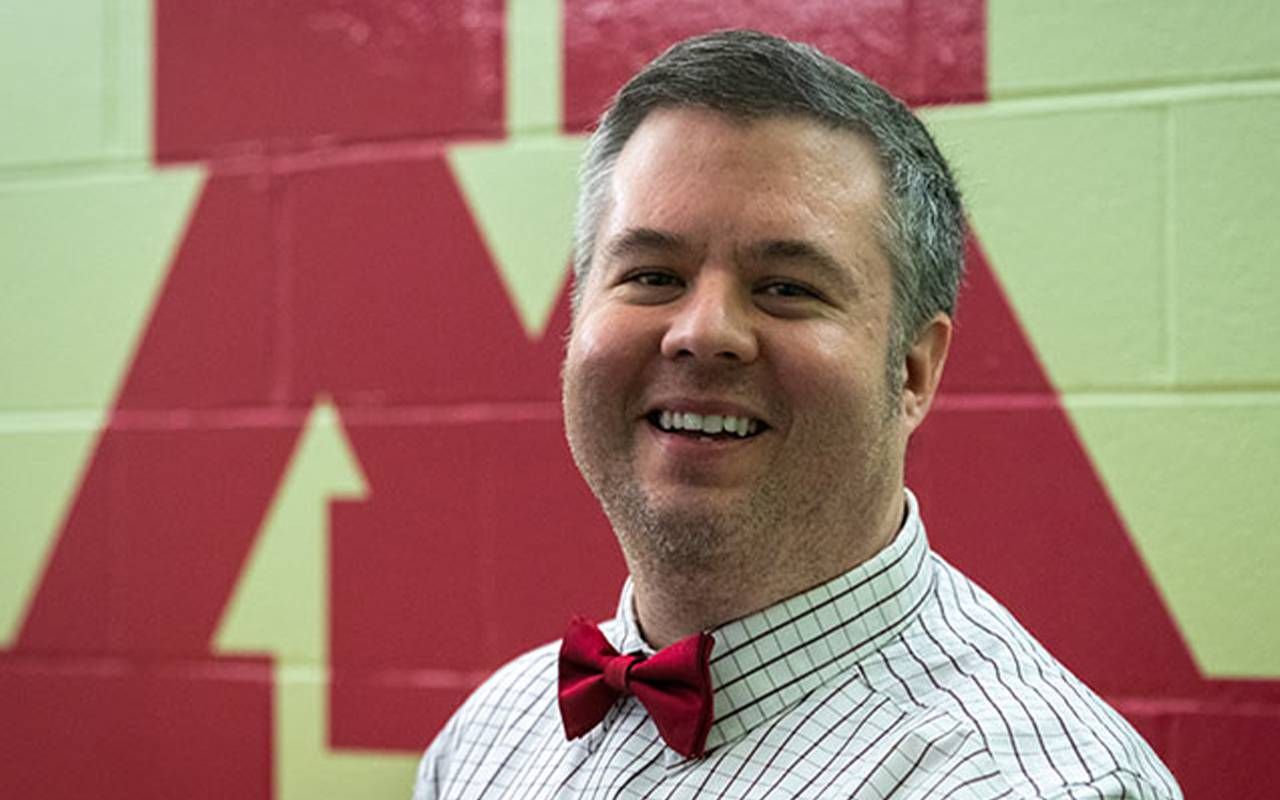Rajean Moone: Protecting the Aging LGBTQ Population
Rajean Moone says the health care community needs to be better equipped to offer sensitive physical and mental health services to older LGBTQ people
Rajean Moone, PhD, is cautiously optimistic about the survey results of the Minnesota 2022 LGBTQ Aging Needs Assessment Report, but believes there is still ground to be gained when it comes to how confident members of the LGBTQ population feel about receiving health services that are sensitive and appropriate.

Moone, 44, a 2022 Next Avenue Influencer in Aging, was the principal investigator on the 2022 report, and also part of the research team that conducted a similar survey in 2012: a year when the social and political climate in Minnesota for LGBTQ people was being challenged.
"There are generational differences between the silent population and the boomer population within the LGBTQ community,"
"At that time, there was a constitutional amendment on the ballot in Minnesota attempting to define marriage as being between one man and one woman," Moone said. "There was a heightened sense of fear." (The amendment was defeated.)
In that 2012 survey, only 18% of respondents indicated they "felt confident they would receive sensitive service if their LGBTQ status was known."
Fast forward to the 2022 study (which took place from March-June 2021 and surveyed close to 500 participants either online or via paper surveys) and 85% claimed they felt confident their care would be handled in a sensitive manner.
Today, Moone is the faculty director in long-term care administration for the College of Continuing and Professional Studies at the University of Minnesota, and the associate director for education at the Center for Healthy Aging and Innovation.
The improved confidence communicated by survey respondents is a positive step, Moone claims, but there are still other factors at play.
Looking for a True Welcome
"There are generational differences between the silent, or traditional, population and the boomer population within the LGBTQ community," he said. "These two populations have had very different experiences of being out."
As the LGBTQ population ages, and seeks health services, whether for physical or mental health needs, Moone said clinics and providers that are truly welcoming to the LGBTQ community will be more important than ever. "Providers can't just slap a rainbow flag on the front door. Sure, that's a cue about the culture of the provider, but more welcoming avenues are still needed," he said.
Some of these signals to LGBTQ patients include waiting room images of same-sex and non-binary couples, literature that provides actionable and appropriate resources on topics relative to health and aging, and accurate language on clinic intake forms.
Prior to coming to the University of Minnesota in 2018, Moone was the executive director of Training to Serve in St. Paul, Minnesota, an organization dedicated to providing training to LGBTQ service providers that is culturally appropriate to their client base. Training to Serve has since merged with Rainbow Health.
"More than 15,000 service providers have participated in training programs, and over ninety percent of health care providers in Minnesota have gone through sensitivity training," he said. Specific curriculum topics offered by Rainbow Health (webinars or in-person) include LGBTQ+ 101, Trans 101, HIV and Mental Health, and HIV and Aging.
The Benefit of Support Groups
While the bulk of survey respondents find LGBTQ welcoming services to be acceptable, there's one particular area where LGBTQ segregated services are preferred, and that's in support groups.
"When there is affinity among the members of a group, a higher level of empathy and connection can happen," said Moone. This is especially true for older members of the LGBTQ population.
"The experience of being part of the older generation is different. When they were growing up, homosexuality was considered illegal and immoral," he said. "Being in a group with others who share that experience makes a difference."
Being able to attend support groups in their own communities, for example at a local senior center, also has impact. "They want to feel welcome to attend with their friends and neighbors and not have to travel to the 'gay senior center' on the other side of town," said Moone.
Solo Agers in the LGBTQ Community
As the population ages, the number of solo agers in America will continue to increase. According to the Census Bureau, by the year 2030, 20% of U.S. residents will be 65 and older. Currently, there are more than 15 million adults with no children (one in six older adults) and the number is expected to grow. At present, more than 22 million older adults live alone, according to census statistics.
"Among LGBTQ people, the rate of caregiving is higher. They often become de facto caregivers to their parents,"
For the LGBTQ population, solo aging is a particularly compelling issue.
"For many, throughout their lives, they hid their sexual orientation or gender identity. Many have never had a family, and never had any children," Moone said. "Others have been caregivers for aging parents, which also has exacerbated their sense of social isolation."
Sadly, many gay men lost vital members of their social networks due to HIV and AIDS in the 80s and 90s. "They were not able to rebuild those strong connections that were lost to them," said Moone.
A Large Collective of Caregivers
As Moone says, social isolation can have a profound effect on caregivers, many of whom came into their roles due to broader family circumstances.
"Among LGBTQ people, the rate of caregiving is higher," he said. "They often become de facto caregivers to their parents because they don't have children to raise, so the responsibility falls to them."
Finding a community to be part of, where they can freely express the burden and stress of being a caregiver can be a challenge. However, Moone says that all of the caregiving organizations in Minnesota have received LGBTQ provider training, making them better equipped to deal with caregivers looking for support and advice.
An adult child could also be providing care to a parent who came out later in life as LGBTQ, and as Moone said, these caregivers are also in need of specific support.
The Future of LGBTQ Communities and Aging
Right now, Moone said, there is "a significant amount of research" happening in the LGBTQ and aging space. He specifically cited the work of Karen Frederiksen Goldsen, founder and director of the Goldsen Institute at the University of Washington, saying that the data she and her team has collected have "helped those working in the field to understand disparities that still exist."
One area that continues to need further study is around assisted living and nursing homes, and how providers can create an atmosphere that is supportive and welcoming to LGBTQ residents.
Moone and his colleagues at the University of Minnesota, Professor B. R. Simon Rosser, who specializes in LGBTQ+ health and Associate Professor Tetyana Shippee, who specializes in the field of long-term care equity, are leading a first of its kind, five-year study (currently in year two) to improve residential care for LGBTQ elders and offer training programs for employees and providers. The study is funded by a grant from the National Institute on Aging.
"The goal of the study is to analyze care policies and HR policies as they relate to LGBTQ care at nursing homes," said Moone. "The outcome would be to create a sensitivity e-training that could be disseminated nationally." He said the prototype for this training is scheduled to be available in the third year of the grant.
The Work Continues
For LGBTQ nursing home residents, the availability of this type of staff training is essential.
"Many times, elders go back into the closet if they go into residences," said Moone. "Or if they remain in their homes, but have home health care workers visiting regularly, partners will take down photos or hide traces of their life together, and say they are roommates."
"As the LGBTQ population grows older, they must be able to live in an environment where they are supported and respected."
The results of the 2022 survey were released at a time when, as Moone said, "momentum has shifted and the pendulum has swung a bit."
"Homophobia and transphobia, and anti-LGBTQ sentiment, have increased significantly over the past year," he said. "The results (of the survey) are worth celebrating, but there need to be steps forward — even though I'm enough of an optimistic pragmatist to also understand there will be steps back."
"The fact of the matter is that it's not illegal to be in a same sex partnership, which wasn't true seven years ago," Moone said. "As the LGBTQ population grows older (partnered or not), they must be able to live in an environment where they are supported and respected."
What does Moone think the next decade will bring with respect to aging in America?
"In ten years, we will be at the height of the demographic shift presenting us with both amazing opportunities and challenges. I envision the spread of age-friendly policies and practices is far reaching as we work to eliminate ageism and embrace aging," he said. "As a society we will have made significant strides in eliminating health, economic and social disparities so that all communities can live well and age well."


